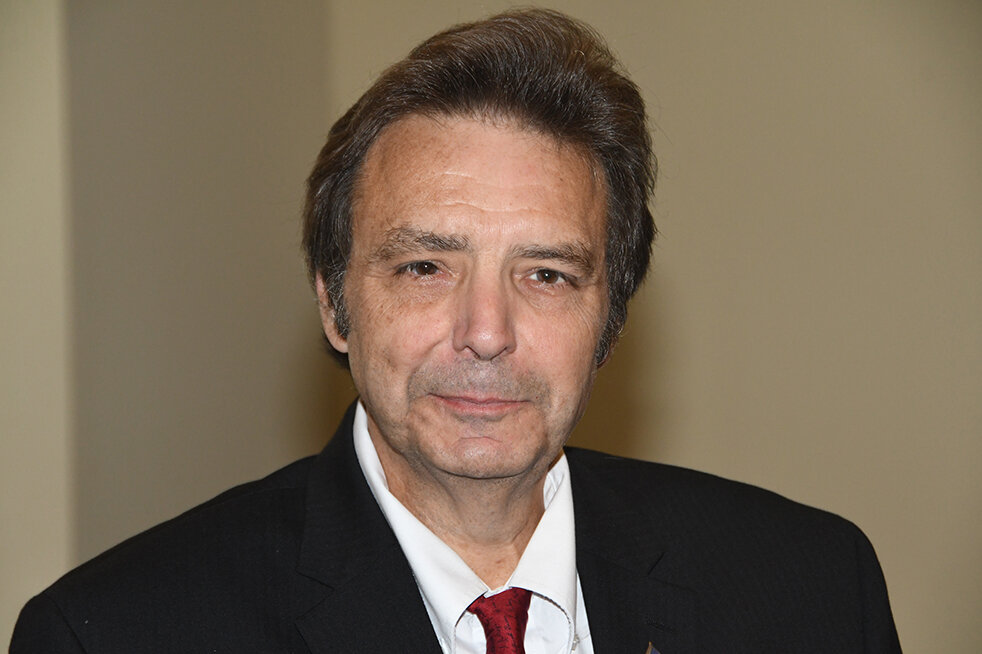Hoff: Protecting nation’s lakes is paramount
Dr. Samuel B. Hoff is a George Washington Distinguished Professor Emeritus of history and political science at Delaware State University. He previously worked at Clean Water Action, an environmental lobbying firm.
It was a scene right out of the 1975 blockbuster movie “Jaws,” only this was real, and humans contributed to the cause: On the Saturday of last Labor Day weekend, at a lake in north-central Pennsylvania, the lifeguards suddenly jumped off their elevated chairs, repeatedly blew their whistles and ordered all swimmers at the location they were guarding to get to land immediately. The reason: They had just been informed of an adverse finding in the most recent testing of lake water a week earlier, in which an excessive level of nitrates was present.
Whether natural or human-made, freshwater lakes contain at least 98% of surface water available for human use. About 70% of the world’s total lake water is found in Asia, Africa and North America. Within the U.S., the states with the largest number of lakes are Alaska, Kansas and Florida. While Pennsylvania is ranked 38th among all states with 50 lakes, Delaware is ranked 48th with 30 lakes, according to the World Population Review.
Lakes certainly bring a plethora of benefits. For one, the water storage in reservoirs is vital for maintaining safe levels of drinking water. Lakes support aquatic ecosystems and wildlife around their borders. Without question, lakes can be a boon to a local economy, bringing tourists and others for recreation.
However, various types of pollution and the effects of climate change have damaged the national health of lakes. First, there is clear evidence of warming of lakes, which causes a shorter duration of ice cover, impacting the overall hydrologic cycle. Of course, this is not limited to lakes, as NASA just found that global sea temperatures have increased daily for more than a year. Second, pollution from plastics and other litter remains a serious problem. A 2023 study of 38 lakes worldwide found bits of plastic in every one. Third, lakes can be poisoned by seepage of three different kinds, including from treatments like herbicides, pesticides or fertilizer; from sediment of silt or clay produced by soil erosion, road construction or deforestation; and by chemicals such as nitrogen and phosphorus from faulty septic tanks and inefficient sewage systems. The latter, along with lack of aeration, causes toxic levels of bacterial algae to grow. Finally, the dam area of many lakes is deficient, leading to, among other things, buildup of mercury and lead levels.
The good news is that, for every environmental challenge confronting lakes, there are at least feasible solutions.
For incidents such as the one mentioned at the start to be prevented in the first place, there must be two forms of improvement in lake water testing. First, the monitoring of water health can and must be done on a regular basis. There are certainly reliable on-spot tests available that don’t take a week to analyze.
The second area of testing improvement involves expanding the type of testing beyond pH kits to encompass those measuring clarity, conductivity, salinity and turbidity.
To minimize lake warming, an organized plan for shoreline shading could be initiated or preserved. During the summer months, a program that would increase aeration should identify stagnant places and concentrate there. Regular cutting of weeds and lily pads could also reduce warmth in unshaded areas.
Reducing seepage pollution to lakes is the most proximate problem to solve. Avoiding construction and runoff from chemicals near lake shorelines is essential, as is increasing fines for septic or sewage leaks. While fines are also one way to fight human-produced pollution such as plastics, a reputable recycling project could help. On a larger level, the proposal recently enunciated by EARTHDAY.ORG senior vice president Susan Bass for a global plastics treaty could rejuvenate lakes worldwide (“A global treaty on plastics can help us all").
To eliminate heavy mineral and metal deposits in lakes, testing must first locate the highest levels, which often coincide with derelict dams.
Finally, those who fish should find an alternative to lead in their tackle.
According to United Nations executive climate secretary Simon Stiell, the world has two years to save itself from the impact of global warming caused by heat-trapping emissions. While local and global lakes may not be that close to extinction, current conditions must be changed, starting with promoting progressive policies of protection from pollution’s perils.
Reader reactions, pro or con, are welcomed at civiltalk@iniusa.org.







